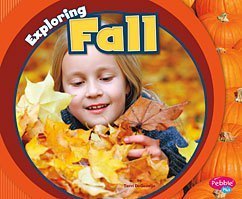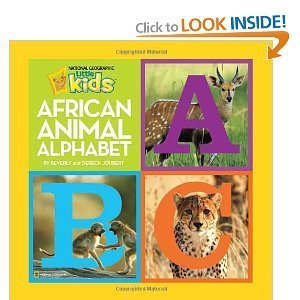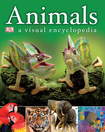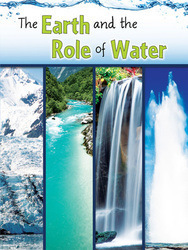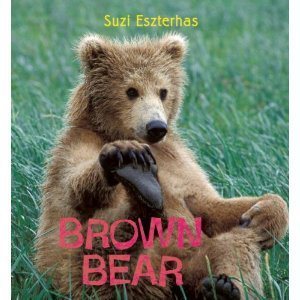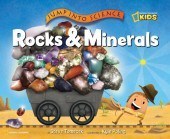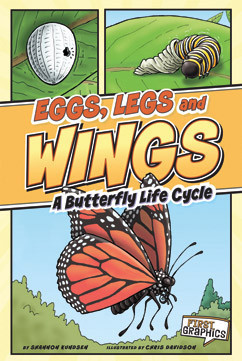Shirley Smith Duke's Blog, page 2
September 26, 2012
I, Galileo
I, Galileo
Illustrated by author
Alfred A. Knopf, 2012
ISBN #078037586753
Grades 3-5
Nonfiction picture book
“Imagine a world with no clocks, thermometers, or telescopes. A world where everyone believes the earth stands still as the enormous sun travels around it once each day.”
Written in the voice of Galileo Galilei, the famous “father of modern science,” I, Galileo shows the brilliant yet human side of this radical thinker who was considered a heretic and imprisoned at the end of his life. The book traces Galileo’s work with his father to his interest in mathematics rather than medicine, as his father wished, to his studies that revolutionized astronomy.
Over time, people began to distrust Galileo and he went before the Inquisition, well-handled for young readers by Christensen in the lovely narrative text. Initially I was concerned at using first person to tell this story, but Christensen’s voice as Galileo’s manages to convey the information while keeping it authentic but readable for this age.
Back matter includes an afterward, chronology, Galileo’s experiments, inventions, and discoveries, along with a glossary, bibliography, and websites.
This is a wonderful book toread to introduce science to elementary aged readers and provides an insight into a world long past. It would be a good way to introduce standing up for your beliefs as well as promoting interest in science. This book is one that should be in every library.
Activity 1
Choose an invention or experiment and look it up to learn more about that invention. You may have to look up the individual inventions as you research.
Activity 2
Read about the phases of the moon and draw and label each phase.
This site has good information and diagrams.
This site gives some general information about Galileo.
This site has background on Galileo.
National science standards: forces and motion; influence of engineering, technology, and science on society and the natural world
Book provided by publisher for Librarians’ Choices Committee


September 18, 2012
Exploring Fall
Exploring Fall
By Terri DeGezelle
Capstone, 2012
Exploring the Seasons Series
ISBN #9781429676960
Grades PreK-2
Nonfiction
“Fall is the season of change. Everything gets ready for winter. In the Northern Hemisphere, the first day of fall, or autumn, is September 22 or 23.”
Exploring Fall includes information about the seasons and where fall fits in, light, water, trees, animals, people, and fall in the different hemispheres. The short narrative text introduces the photograph on the opposite spread.
The book has a glossary, a read more section, internet sites, and an index. It holds 225 words and is at a grade 1 reading level. This series is a perfect way to introduce the seasons, especially with school having started. It works well with the Common Core by extending fall facts to how other things in their world relate to fall. It’s a lovely book and a great way to kick off autumn, a study of the seasons, or predictable changes in the environment.
Activity 1
Make a list of all the topics from the book that are connected to fall. Discuss how each kind of life or event is affected by fall. Illustrate the list to show the changes that take place.
Activity 2
Before reading the book, introduce the title. Then show the pictures without revealing the text. Discuss what kinds of information each picture provides. Make a list on the board or chart for each picture. Then read the text. Talk about what each part of the book gave in the way of information.
National Science Standard: weather and climate
Common Core: grade 1 – Reading Standards for Informational Text
3. Describe the connection between two individuals, events, ideas, or pieces of information in a text.
6. Distinguish between information provided by pictures or other illustrations and information provided by the words in a text.
Book provided by Capstone.


September 11, 2012
African Animal Alphabet
By Beverly and Dereck Joubert
National Geographic, 2011
ISBN #978-1426307812
Grades PreK-3
Nonfiction
“As we lie in our tent at night in the African bush listening to the barks, chirps, twitters, and roars of the animals around us, we understand that all these animals have their own way of talking. We’ve filmed and photographed these creatures for many years and have come to know them very well. Each animal is different, just like you and me.”
This alphabet book is filled with short fact blurbs and large, exquisite photographs of African animals centered on the alphabet theme by the authors, who have spent more than 25 years in Africa. Familiar and not-so-familiar animals are presented in the spreads and come following a map of Africa showing the terrain and a short introduction about finding more words in the text that begin with that letter.
Readers and listeners will find the pictures appealing and the layouts draw the reader’s attention to some of the “Did You Know” text boxes. Back matter includes more short facts about each animal presented, a glossary, and more information and web sites.
The appeal of this book is that it appeals to a wider age range than most alphabet books and would be a fun read, reference, introduction to animals, or an excellent way to introduce Africa. From pictures to facts, this is a terrific book and would make a great gift, too.
Activity
Make an alphabet book of animals from your state, region, or country. Look up animals and make a book as a group of individually. If you are working with young children, assign each child a letter of the alphabet to research. Write 2-4 facts about the animal, draw a picture, put it in a category, and try to use alliterative words in the animal facts.
National Geographic has animal information for kids.
This site has child-friendly information.
National Science Standard: structure and function; growth and development
Book provided by publisher.


September 5, 2012
ANIMALS a visual encyclopedia
ANIMALS a visual encyclopedia
Edited by Carrie Lowe and Caroline Stamps
Dorling Kindersley, 2008
ISBN #9780756640279
Ages 5 – 9 years
Nonfiction
“What is an Animal?
The animal kingdom is a vast collection of weird and wonderful creatures. Members of this group come in many different shapes and sizes, but they are all made up of cells, and they all have nerves and muscles to move and respond to the world around them. Most important, all animals eat food to make energy.”
This visual encyclopedia first defines animals and then begins with a chart showing the relationship of life as it is divided into various categories. From this introduction, filled with charts, photos, and sidebars explaining animal relationships, the book continues with information about behavior, life cycles, habitats, and endangered animals.
Following this introduction, each group of animals is defined and detailed in sections about vertebrates and invertebrates. The information is excellent and a good way to introduce any study of animals and how they interact. Bold and large photographs make the wide range of text narrative appealing and will draw in the reader. The representative animals are both familiar and unfamiliar. For example, the water bird heading in the bird section includes the Black swan, the Mallard, and the Muscovy duck.
I can see readers picking up the book to browse or using it for the information. It does not read like a typical encyclopedia and invites children to read and explore the world of animals. This book is perfect for the library, classroom, or home and it would be a wonderful gift for any child.
Activity 1
Choose an animal and read about its habitat. Identify why it lives in that particular habitat. Look up more information about the animal and read about it. Make a list of adaptations the animal has that allows it to live and thrive. Illustrate the adaptations or write an explanation of those adaptations.
Activity 2
Choose an animal from the book. Read about its life cycle. Then create your own chart to illustrate the life cycle. Don’t overlook the wide number of interesting invertebrates!
Find animal information at National Geographic Kids.
The San Diego Zoo has good animal information.
See more animal information here.
National Science Standard: growth and development of organisms; interdependent relationships in ecosystems; adaptation
Book provided by publisher


September 4, 2012
Check Back Tomorrow Please!
My computer was hacked and seriously compromised this morning. I spent all day getting it back to normal with the help of a computer protection company.
Please come back tomorrow and I’ll have my new post–ANIMALS a visual encyclopedia from DK. It’s a great book!


August 28, 2012
200th Post! The Earth and the Role of Water
Help me celebrate my 200th post since I began blogging in December, 2008. Thank you to all the faithful readers–I appreciate your interest in my blog. I’m celebrating with one of my latest books–isn’t it a beautiful cover!
The Earth and the Role of Water
by Shirley Duke
Rourke Educational Media, 2013 (available now)
ISBN #9781618101266
Grades 4-6
Nonfiction
“Water from the Niagara River plunges 75 feet (23 meters) to form the second largest waterfall in the world, Niagara Falls. The river is fed by four of the five Great Lakes. The lakes were carved by Ice Age glaciers and hold nearly one-fifth of all the Earth’s freshwater.”
This is one of my latest books from Rourke! It was so exciting to write and covers everything water-related on our planet. We take water for granted in the U.S., but many people struggle daily to get enough water for their needs. This book addresses water from every side and I loved researching and writing it.
The Earth and the Role of Water tells about the water cycle, the force of water, the water supply, and problems related to water, including pollution, lack of, and our effects on the water supply. The states of water as a solid, liquid, or gas, as well as the relationship between living organisms and water is explained.
Salt and fresh water, groundwater, and the power of water make up later chapters. Dams, generators, and hydropower are discussed and clear diagrams and photographs clearly illustrate and support the text. The final chapters focus on weather and water and conserving and protecting our supply of fresh water for the world.
The book has a table of contents, a glossary, suggested websites, and index. I also wrote the captions! The book would be an excellent introduction to the water cycle, erosion, a study of conservation, a look at the states of matter, or city water purification.
The following sites will give you more information about water.
Activity 1
Research severe storms, hurricanes, floods, drought, or tsunamis. Write and explain the role of water in these kinds of weather and explain how they affect people in their paths.
Activity 2
Develop an experiment to demonstrate water’s three states of matter. Use the scientific method to guide your experiment. This site will help you understand the scientific method. Carry out your experiment and write it like a scientist. If you need to use heat, get an adult to help you.
Here’s a form to guide you as you create your experiment.
National Science Standards: roles of water in Earth’s surface processes; weather and climate; Earth’s materials and systems; human impacts on Earth’s systems
Book provided by publisher


August 26, 2012
Nonfiction Monday
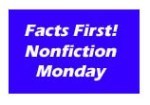
Welcome to Nonfiction Monday.
Add your link in the comments and I’ll update the books throughout the day.
BROWN BEAR
Eye on the Wild Series
Written and photographed by Suzi Eszterhas
Frances Lincoln Children’s Books, 2012
ISBN: 9781847802057
Nonfiction PB
Grades K-3
“Far away in the mountains of Alaska, in the middle of winter, two baby brown bears are born. It is so cold outside that they spend the first few months of their lives tucked away in a warm and cozy den, fast asleep next to Mom.”
Professional wildlife photographer Suzi Eszterhas has filled Brown Bear with an up-close look at brown bears, often called grizzly bears. The book begins with the birth of the cubs and traces their lives for the next two years as they learn to live on their own with their mother. The narrative text provides excellent details about their lives and explains the bears’ activities without anthropomorphizing them in any way. By the arrival of spring following the young bears’ third birthday, the young venture out on their own.
The writing is descriptive and well-done, and the photography is fantastic. The pictures show the bears in their natural setting engaged in activities that develop naturally and the up-close photos are amazing, showing them in their own environment.
This is a terrific book to illustrate life cycles. It shows the bears in their natural habitat and could lead to a discussion of omnivores. It would be a good read-aloud and is full of fascinating facts about these animals. The final page provides more brown bear facts. This book is a fun read and I absolutely loved it. Other Eye on the Wild books in this series are about cheetahs, gorillas, and lions.
Activity
Look up information about polar bears and black bears. Create a way to compare the three different kinds of bears. You may want to include size information, young, food habits, and anything else you can learn. Present your information in an interesting way.
National Geographic has more information about brown bears.
Learn about polar bears here.
National Geographic has information about black bears here.
Take a look at the author’s new work on lions here.
National Science Standard: growth and development of organisms; social interactions
Book provided by the publisher, Francis Lincoln Children’s Books.


August 21, 2012
BROWN BEAR
Eye on the Wild Series
Written and photographed by Suzi Eszterhas
Frances Lincoln Children’s Books, 2012
ISBN: 9781847802057
Nonfiction PB
Grades K-3
“Far away in the mountains of Alaska, in the middle of winter, two baby brown bears are born. It is so cold outside that they spend the first few months of their lives tucked away in a warm and cozy den, fast asleep next to Mom.”
Professional wildlife photographer Suzi Eszterhas has filled Brown Bear with an up-close look at brown bears, often called grizzly bears. The book begins with the birth of the cubs and traces their lives for the next two years as they learn to live on their own with their mother. The narrative text provides excellent details about their lives and explains the bears’ activities without anthropomorphizing them in any way. By the arrival of spring following the young bears’ third birthday, the young venture out on their own.
The writing is descriptive and well-done, and the photography is fantastic. The pictures show the bears in their natural setting engaged in activities that develop naturally and the up-close photos are amazing, showing them in their own environment.
This is a terrific book to illustrate life cycles. It shows the bears in their natural habitat and could lead to a discussion of omnivores. It would be a good read-aloud and is full of fascinating facts about these animals. The final page provides more brown bear facts. This book is a fun read and I absolutely loved it. Other Eye on the Wild books in this series are about cheetahs, gorillas, and lions.
Activity
Look up information about polar bears and black bears. Create a way to compare the three different kinds of bears. You may want to include size information, young, food habits, and anything else you can learn. Present your information in an interesting way.
National Geographic has more information about brown bears.
Learn about polar bears here.
National Geographic has information about black bears here.
National Science Standard: growth and development of organisms; social interactions
Book provided by the publisher.


August 15, 2012
Rocks and Minerals
By Steve Tomecek
Illustrated by Kyle Poling
National Geographic Kids, 2010
ISBN #978-1426305382
Grades K-3
Nonfiction
“Rocks are all around us. Have you ever wondered where all these rocks came from? What are rocks made of? Here’s your chance to become a ‘rock star’ an discover the wonderful world of rocks.”
Rocks and Minerals is a terrific introduction to rocks, the rock cycle, and minerals. In a simple, fun way, Steve Tomecek, also known as “The Dirtmeister,” explains rocks through the Earth’s formation and subsequent cooling, the building blocks of rocks called minerals, and the three groups of rocks and how they formed. Also included are examples of how people use rocks, erosion and sedimentation, and fossils embedded within rocks. The conclusion diagrams the rock cycle. The book ends with an easy to do experiment to show how conglomerate rocks are formed.
The illustrations are shown through the eyes of an unnamed cartoon figure that frolics about as a guide. This book would be a good read-aloud or one a reader might want to read on his or her own. The rocks depicted in the art are shown in large photos that are labeled and a pronunciation is given for the hard-to-say names. This good information would be an excellent way to begin a study of rocks and minerals.
Activity
Try the activity suggested in the book and make a conglomerate rock. Then use the same technique to make a sedimentary rock with a fossil inside. You may want to use a smaller cup for this activity.
Use the glue, but include several layers of sand, dirt, and other material with a different grain size (like powered clay, plaster of paris, or even salt) to make the different layers. Place a leaf or small object covered in petroleum jelly or small object between two of the layers. Let the rock dry and open it. Break it apart and see if you can find the fossil.
Another way to do this is to use plaster of paris for the fossil layer. Make the layers, but let the plaster layer dry. Cover the layer and fossil object with petroleum jelly, put the fossil object on top of the plaster layer, and add more plaster and layers. Let this dry and break it open.
Observe the fossil imprint. Then talk about which layer is the oldest and youngest. The bottom layer would be oldest.
National Science Standards: Earth’s material and system.
Book provided by publisher for Librarians’ Choices Review Committee.


August 7, 2012
Eggs, Legs, WINGS
By Shannon Knudsen
Illustrated by Simon Smith
Capstone Press, First Graphics, 2011
ISBN #9781429653671
Nonfiction, graphic format
Grades 1-3
“Butterflies look like flower petals floating in the breeze.”
Eggs, Legs, Wings is a special book. I’ve always had trouble focusing on graphic novels. I’m a fast reader, and I’ve found this format hard to read. This book is one that I not only could read easily, but was one that I really enjoyed.
Using a graphic format, Eggs, Legs, Wings explains the life cycle of a butterfly, but it’s much more than that. The book traces the life cycle, but each chapter also includes information that extends each stage of the cycle. Insect characteristics and up-close graphics show clearly what the text is stating. Detailed drawings show the caterpillar emerging from the egg and follows it as it eats and grows. Predators and food sources add to the information about the life cycle.
The book continues with molts, chrysalis spinning, and the emerging butterfly. It continues with the adult butterfly’s wing drying, facing predators, and an explanation of warning coloration before the butterfly moves off to find food and then mate. The life cycle comes full circle with the graphic illustration of the four basic steps.
The art is excellent and detailed, accurately showing the butterfly in its development. This is a lovely book for young readers and one I’d loved to have had when I taught second grade. This is a terrific book and one that should appeal to a variety of readers.
Activity
Look up an insect that undergoes incomplete metamorphosis. Draw its life cycle and compare it to the life cycle of the monarch butterly.
Learn about incomplete and complete metamorphosis here.
Use their list to choose an insect that undergoes incomplete metamorphosis.
KidZone has great pictures and more monarch butterfly information.
Color a realistic butterfly or a chrysalis here.
National Science Standard: growth and development of organisms
Book provided by Capstone Press


Shirley Smith Duke's Blog



